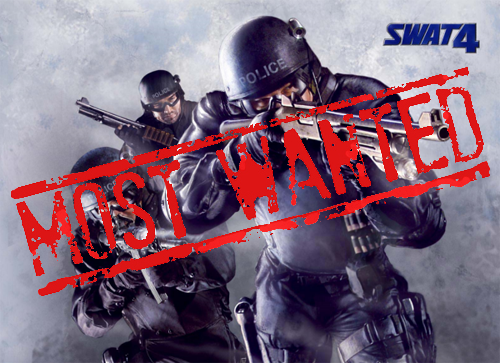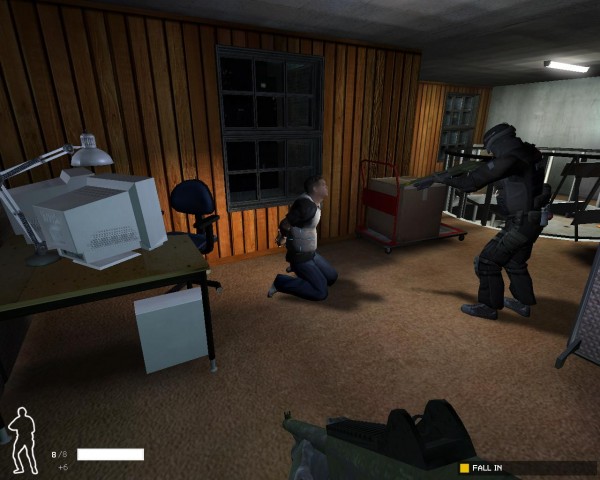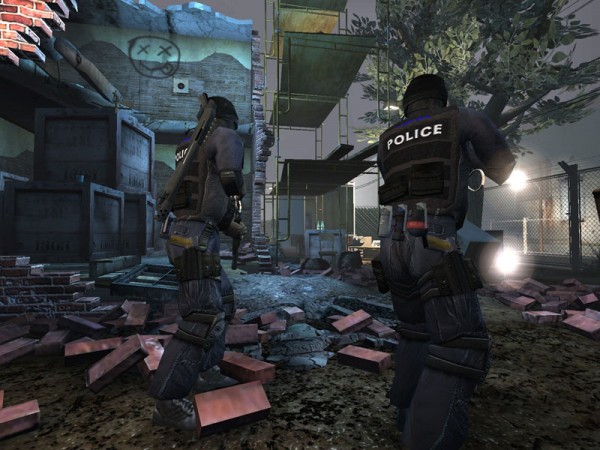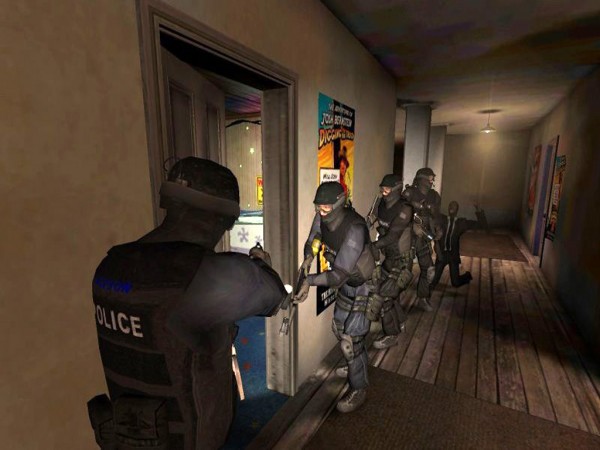XBLA’s Most Wanted: SWAT 4
Before the Tom Clancy’s Ghost Recon games were popular there was Police Quest, a point and click cop adventure from Sierra Entertainment. In 1999 the series changed to a first person tactical shooter with SWAT 3: Close Quarters Battle. The next in the series, SWAT 4, was released in 2005 to critical acclaim. Developer Irrational Games created an amazing experience and moved on to create the Bioshock series.
SWAT 4 follows a fictional Los Angeles SWAT team through several tactical situations. You play as the team leader, giving commands, taking down suspects, and securing evidence. It was powered by Unreal Engine 2.5, one of the most powerful for its time, and still looks strong today.
What should change:
Minor facelift – SWAT 4 by Xbox Live Arcade’s standards still looks fairly decent. It’s not going to win any beauty contests, but it feels solid enough to immerse players. Porting the game up to Unreal Engine 3, using the production textures (which would be higher resolution) and outputting the game at 1080p would do wonders. It doesn’t need all the Unreal Engine 3 extras; the engine itself will clean up what’s already there quite nicely without the need for bump maps, specular maps, and all that other high tech jazz.
Kinect voice support – One of the coolest features about tactical shooters is the ability to give commands to your team. Telling them to “Open and bang”, for example, will cause the team to breach the door and throw a flashbang grenade. While controller-based commands are a must, the ability to shout the commands via Kinect would be even more amazing. The game’s console predecessor allowed this back in 2003 with a headset mic, so why not now?
The Stetchkov Sydicate as DLC – The Sketchkov Syndicate was an expansion pack for SWAT 4 released in 2006. It featured a new campaign, new multiplayer modes, new weapons, and more. The expansion could easily be offered as downloadable content, however core features should be integrated into the main game. For example, in Sketchkov the player could use strike suspects with their gun to force compliance. These types of features would be seen by today’s communities as more of a core feature than additional content.
What should stay the same:
The missions – Each of the game’s 13 missions takes place in fairly confined corners. Most of the doors in a given building are closed causing the player to decide how to breach them. Suspects, evidence and civilians are randomly placed each time making replays of a given mission totally unique.
The chatter – From the mission briefings to the in-mission dialogue everything feels authentic. Hearing the team leader say things like “Element: fall in on me” and “Red team: mirror under the door” gives a real sense of immersion. Even the reports in to command feels exciting. But nothing beats entering a room of suspects and hearing you SWAT team scream “Hands up!” while the suspects yell as well. It’s chaotic and gets the adrenaline pumping. Audio is an important part of any game, but it’s so much more here.
Multiplayer gameplay – Every campaign mission in SWAT 4 can be played with a total of five players. Any empty slots will be taken over by the AI. In addition the game includes multiplayer exclusive levels and game modes. None of the modes feel tacked on, either. Each one provides a unique and exciting experience. Unlike a lot of games players won’t be drawn to one or two game modes.
What should stay the same:
SWAT 4 is still an incredibly solid game almost six years after its initial release. Unfortunately the tactical shooter genre is one t hat appeals to a very niche market. Lots of players aren’t willing to drop retail money for a tactical experience that’s overwhelming at first. SWAT 4 somehow has an approachability to it that helps new players to the genre feel right at home. Combine that with the fact that it would be the only tactical shooter on Xbox Live Arcade and you’ve cornered the market — both for fans of the genre and for those interested, but not for retail money.





